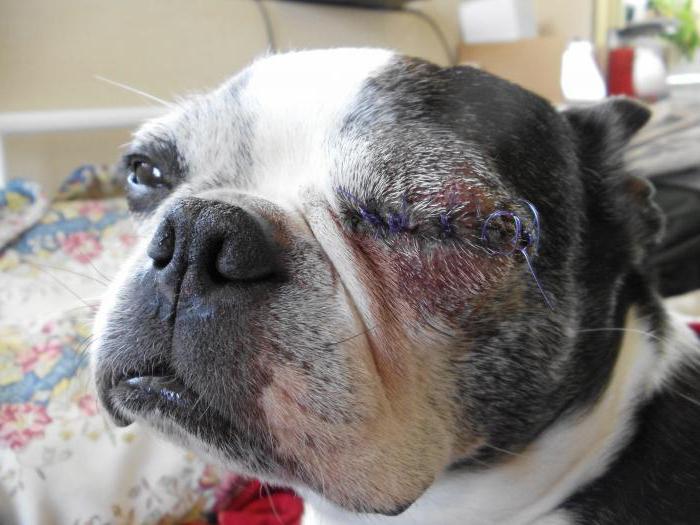Enucleation of the eyeball is the removal of the eye. This is an irreversible treatment for various visual impairments. It is used in cases where the disease threatens the life of the animal.
Eyeball Enucleation: Indications
The following reasons are distinguished:
- Severe, incurable trauma, such as a perforated or torn eyeball.
- Uncontrolled glaucoma.
- Infections or inflammation on the surface or inside the eyes that do not respond to therapy.
- Eye cancer
- Congenital deformities of the eye.
- Eye diseases outside the orbit.
- Diseases inside the eye that can spread to the rest of the body.
Enucleation of the eyeball is also reserved as the last option to relieve pain in any eye, especially if it is blind and not needed by the animal. Enucleation and blindness are well tolerated by dogs and cats.
Veterinary cat eye removal
Before enucleation of the eyeball, a cat usually attempts to save the eye. Thanks to the achievements that have occurred over the past 20 years in the field of veterinary ophthalmology, it is now possible to successfully treat many eye diseases that previously could not be treated, and in many cases preserve the vision of the animal.
When cancer is diagnosed in or around the eyes, when the eye is blind and persistently painful, or when the cost of treating the eye is too high for the wearer, enucleation of the eyeball may be chosen as the initial treatment.
Surgical procedure
There are two options for surgical enucleation:
- Removing all tissues inside the eyeball, including muscles and other nearby tissues, is called ectoteration. This procedure is primarily used to remove the cancerous mass of the eye.
- Removing the eyeball without taking all surrounding tissue is called enucleation and is the most commonly performed procedure. After removing the eyes, the edges of the eyelids are constantly closed with a suture. When the hair grows, the appearance of the cat will return to normal.

Sometimes an orbital implant is used. It is placed after removal of the eye, in order to restore the volume of the eyeball and improve the movement or mobility of the eye prosthesis and eyelid. The eyeball is a slightly elongated sphere with a diameter of about 24 millimeters. To avoid its entry into the eye socket, an implant approximating this volume can be placed in the space of the removed eye, fixed and covered with a capsule and mucous membrane covering the natural sclera. Implants can be made of many materials, the most common of which are plastic, hydroxylapatite, metal alloy or glass.
Later, once the conjunctiva has healed and the postoperative swelling has decreased, an ocular prosthesis can be created to provide the appearance of a natural eye. Its shape is a cup-shaped disk so that it can comfortably fit in your pocket over the centuries over the conjunction that covers the orbital implant. The outer part of the ocular prosthesis is painted and finished to mimic the natural color of the eyes, shape and shine. It can be periodically removed and cleaned.
Postoperative Enucleation Care
After surgery, the incision (suture site) must be protected until healing is complete. A cat can be sent home with an Elizabethan collar to prevent friction or injury to the site of surgery. Antibiotics can be prescribed if the eye or orbit is infected during surgery.
Usually a small postoperative tumor is observed, and if the eye was inflamed before surgery, bruises can also be seen in the area. Sometimes a cat can sneeze, and a small amount of bleeding fluid may be released from the nostril on the same side as the operation. These symptoms are usually tolerated within two to four days. Sutures are usually removed after seven to ten days.
Watch your pet carefully after surgery. If there are any signs of persistent edema, if there is any leakage from the sutures, if the animal is not feeling well, notify the veterinarian. Most pets are completely cured of the operation and feel normal within 48-72 hours.
What is the result of enucleation?
The goal of enucleation is to relieve pain caused by the initial condition of the eye, which led to the operation. Most animals recover within a few days after the procedure. Provided that the remaining eye is functioning (that is, what it can see), dogs do not feel the loss of one eye. After a short period of adaptation, their mobility and behavior return to normal. Sometimes a dog needs to remove both eyes. It may seem strange or cruel, but it has its merits. Surgery can improve the quality of life and eliminate pain. Of course, these are dogs with special needs, they need additional care and a safe environment, but, as a rule, they are happy to be healthy and loved by their master.